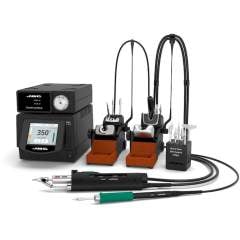Enhancing Industrial Efficiency with Bosch Rexroth Systems
Enhancing Industrial Efficiency with Bosch Rexroth Systems
Blog Article
High-Performance Soldering Stations by JBC
Automation and action control systems are rewriting the principles of production, logistics, and also power management. Behind the curtain, innovative products and effective inventions are operating performance, sustainability, and output to amazing new heights. What makes these options this kind of warm bosch rexroth subject, and why are they frosting tendency provides in industrial groups?

Shaping the Potential with Numbers and Developments
Today, over 60 percent of factories in advanced economies have applied some amount of automated movement control. Contemporary detectors, electrical drives, and digital controllers today underpin everything from robotics to conveyor belts. Based on a 2023 record, the global activity control industry alone is projected to achieve $21 million by 2027. That number represents a compounded annual growth rate (CAGR) of 6.5 percent, showing so just how eager industries are to undertake high-precision automation.
But it's not just traditional factories which are benefitting. Distribution stores across North America and Europe are reimagining workflows through wise conveyor programs and autonomous vehicles. These improvements increase throughput by as much as 30 %, reduce labor fees, and minimize problem prices across fast-paced offer chains.
Precision Matches Output
High-precision motion technology has turned into a must-have in sectors demanding reliability and reliability. Semiconductor manufacturing is an example, wherever linear movement instructions and multi-axis controllers produce accuracy assessed in microns. New surveys show that suppliers leveraging these solutions see trouble prices decrease by around 40 per cent, giving them an important edge in a fiercely competitive field.
Renewable power and e-mobility are viewing similar revolutions. Wind and solar installations significantly depend on real-time automation to boost power capture and improve maintenance. That clever strategy helps cut downtime, with one examine noting a 20 % lowering of preservation charges at services that have followed automated get a handle on systems.
The Intelligent Factory Innovation
Automation is no longer more or less reducing human error. It's about making wise factories, where all communicates seamlessly. Technologies presenting predictive analytics and IoT connection check machinery health and anticipate preservation needs before breakdowns occur. Research indicates that predictive maintenance may decrease unplanned downtime by up to 50 percent, translating into substantial savings for seed operators.
From automotive suppliers ramping up generation speed to logistics firms seeking precise managing and power savings, the numbers tell a compelling history relating to this accelerating sector. If you track current developments or form buying conclusions, knowledge where the industry is headed is crucial.
What's Next for Automation and Action Control?

The focus on sustainability, data-driven manufacturing, and better supply restaurants will only grow. International need for robotics and sensible controllers continues to increase, especially in groups where effectiveness and adaptability mean survival. Industries investing in next-generation automation are setting themselves apart—with the figures to show it.
For organizations mapping out their next move, automation and movement get a grip on are getting less of an alternative and more of a necessity. With returns assessed in larger output, lower fees, and new features, the case for adoption never been clearer.
Report this page